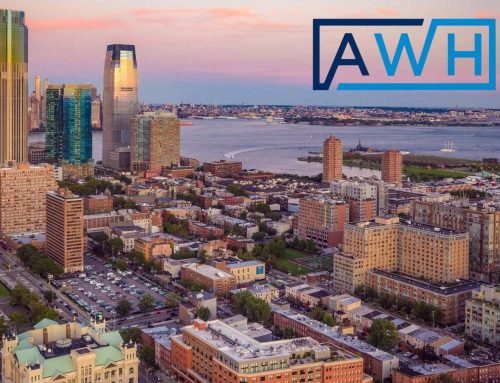Navigating Local Cannabis Regulations: A State-by-State Guide
NEW YORK — Cannabis regulation in the United States functions as a multi-layered governance system, where legal authority is distributed across federal, state, and local levels—with local jurisdictions exerting the most immediate control over real-world operations. While public and investor attention often centers on statewide legalization milestones, the practical determinants of market access—zoning approvals, permitting procedures, license caps, and land-use compatibility—remain firmly within the domain of municipal and county governments.
This fragmented legal architecture creates a regulatory landscape where formal state compliance is necessary but rarely sufficient. Operators may hold state-issued licenses yet remain unable to secure viable sites, navigate local political conditions, or satisfy community engagement expectations. Moreover, local opt-outs, conditional approvals, planning board discretion, and ballot-driven reversals add layers of uncertainty that require not only legal due diligence, but active government relations capacity on the ground.
This guide outlines key state environments where local regulation shapes—not follows—market realities. It is not a legal digest, but a functional roadmap: what operators must understand, monitor, and engage with at the municipal level in order to convert theoretical licensure into operational presence.
California: Local Control as Gatekeeper
California legalized adult-use cannabis via Proposition 64 in 2016, establishing a statewide framework for regulated commercial activity. However, the law granted broad discretion to cities and counties to permit, restrict, or entirely prohibit cannabis businesses within their jurisdictions. This created a fragmented regulatory map where local governments act as primary gatekeepers—determining not only where cannabis activity may occur, but under what conditions.
As of 2025:
- More than 50% of California municipalities continue to prohibit retail cannabis operations, particularly in suburban and inland regions. Many of these bans extend beyond retail to include delivery and distribution.
- Local control mechanisms include zoning restrictions, conditional use permits (CUPs), cap-and-lottery systems, and discretionary review by planning commissions and city councils. Requirements vary widely not only between counties but from city to city within the same county.
- Ballot initiatives and referendums remain active tools for both expanding and restricting access. In several jurisdictions, voter-led campaigns have succeeded in overturning local bans or instituting new licensing limits.
- Jurisdictions that permit cannabis often attach additional compliance obligations, such as community benefit agreements, neighborhood compatibility reviews, or annual license renewals contingent on local performance metrics.
New York: Conditional State Access, Local Veto
New York’s Marihuana Regulation and Taxation Act (MRTA) legalized adult-use cannabis statewide in 2021, but embedded a strong local control mechanism. Municipalities were granted the right to opt out of allowing retail dispensaries and on-site consumption lounges within their boundaries.
Key points:
- 842 municipalities have opted out of retail or on-site cannabis businesses, although several have reversed course since the original 2021 deadline.
- Local governments retain zoning authority over cultivation and processing facilities, even though they cannot formally prohibit them.
- In New York City, Community Boards have no formal veto but exert significant informal influence through required notification procedures and public feedback.
New Jersey: Structured Local Autonomy
New Jersey’s Cannabis Regulatory, Enforcement Assistance, and Marketplace Modernization (CREAMM) Act provides municipalities with significant authority over cannabis business operations within their jurisdictions. This includes the ability to regulate the types of cannabis businesses permitted, impose zoning restrictions, and levy local taxes.
Highlights:
- Approximately two-thirds of New Jersey’s 564 municipalities have opted out of allowing adult-use cannabis businesses.
- Municipalities can enact ordinances to limit the number and types of cannabis establishments, set zoning requirements, and impose distance restrictions from sensitive areas such as schools and places of worship.
- Towns may impose a local cannabis transfer tax of up to 2% on sales of recreational cannabis, affecting the economic feasibility of operations.
- A proposed bill (S4074) aims to allow medical cannabis dispensaries to begin selling recreational cannabis without municipal approval, provided they have operated without violations for at least 180 days.
Illinois: State-Led with Local Conditioning
Illinois legalized adult-use cannabis in 2019 under the Cannabis Regulation and Tax Act (CRTA), establishing a state-managed licensing system. However, local governments retain significant authority over zoning and operational conditions for cannabis businesses.
Notable features:
- Municipalities cannot ban personal possession or use of cannabis but can restrict or prohibit commercial cannabis operations through zoning ordinances and local regulations.
- Zoning hearings for cannabis businesses are public and can be influenced by local political and community sentiments.
- The state’s social equity program has faced challenges, with only about 30% of awarded licenses becoming operational due to regulatory delays and capital constraints.
- The Illinois Department of Commerce and Economic Opportunity (DCEO) has initiated Round 3 of its Direct Forgivable Loan (DFL) Program in 2025, aiming to provide financial assistance to social equity licensees, including craft growers, dispensaries, infusers, and transporters.
Massachusetts: Community Agreements as Gatekeeping Mechanism
Massachusetts continues to require Host Community Agreements (HCAs) for cannabis operators seeking licensure. These agreements, negotiated between municipalities and cannabis businesses, outline the terms and conditions under which operations can proceed.
Core facts:
- The Cannabis Control Commission (CCC) has implemented reforms under Chapter 180 of the Acts of 2022, enhancing oversight of HCAs. This includes the authority to review and approve HCAs to ensure compliance with statutory requirements.
- Municipalities are now required to provide itemized invoices for Community Impact Fees (CIFs), demonstrating a direct correlation between the fee and the actual impact of the cannabis operation.
- The CCC has released a model HCA and additional resources to standardize agreements and promote equity considerations in the evaluation process.
Michigan: Opt-In State with Rapid Local Movement
Michigan’s cannabis industry operates under an opt-in model, requiring municipalities to actively permit cannabis businesses within their jurisdictions. This framework results in a diverse regulatory landscape across the state.
Key notes:
- Out of approximately 1,773 municipalities in Michigan, 139 have opted into allowing recreational cannabis businesses.
- Zoning regulations vary significantly, with some municipalities imposing strict requirements on location, distance from sensitive areas, and operational hours.
- Co-location of multiple cannabis licenses at a single property is permitted, provided each operation maintains distinct and identifiable areas and complies with local zoning ordinances.
- The industry faces challenges such as market saturation and price compression, leading to concerns about the sustainability of some businesses.
Colorado: Mature Market, Active Local Variation
Colorado, a pioneer in cannabis legalization, continues to exhibit significant local variation in its regulatory landscape. While the state has established a comprehensive framework for cannabis operations, municipalities retain considerable authority to impose additional restrictions and requirements.
Significant points:
- Local Licensing and Caps: Municipalities like Colorado Springs maintain strict caps on the number of licensed cannabis businesses. New retail licenses are typically limited to existing medical marijuana locations, and any changes in location or ownership are subject to stringent regulations.
- Social Equity Programs: Denver continues to support social equity initiatives, offering resources and training programs to assist eligible applicants in navigating the licensing process and establishing compliant operations.
- Regulatory Evolution: The state’s Marijuana Enforcement Division (MED) has implemented measures to streamline regulations, focusing on efficiency in licensing, compliance, and enforcement. This includes updated requirements for record-keeping and operational procedures.
Florida: Medical-Only, Centralized But Narrow
Florida maintains a vertically integrated, medical-only cannabis framework, where Medical Marijuana Treatment Centers (MMTCs) are responsible for cultivation, processing, and dispensing. While state law preempts municipalities from outright banning dispensaries, local governments exert significant influence through zoning and permitting regulations.
Implications:
- Municipalities cannot prohibit dispensaries outright but can impose zoning restrictions, such as maintaining a minimum distance of 500 feet from schools, parks, and places of worship. Some cities, like Deltona, have considered ordinances to limit the number and location of dispensaries, effectively creating barriers to entry.
- Legal disputes have arisen over local regulations that some argue amount to de facto bans, challenging the balance between state preemption and local control.
- Efforts to legalize adult-use cannabis continue, with proposed legislation like HB 1501 and SB 1390 aiming to establish a regulated market for recreational use. However, these initiatives face political hurdles and have yet to be enacted.
Cross-Jurisdictional Patterns
State Licensure ≠ Local Viability
Possession of a state-issued license does not equate to operational clearance. In practice, local governments act as independent regulatory layers with the ability to stall, restrict, or entirely block site-specific implementation. Conditional approvals, opt-out clauses, and zoning constraints routinely override state-level authorizations. Without early-stage municipal alignment, a fully compliant licensee may still be functionally landlocked.
Zoning Functions as De Facto Regulation
Land use decisions—typically viewed as technical or administrative—operate as primary regulatory mechanisms in the cannabis space. Planning boards and zoning commissions hold discretion over location, density, co-location models, and proximity to sensitive sites. In many jurisdictions, these procedural tools are used to limit cannabis access under the guise of urban compatibility, effectively shaping market geography.
Political Timing Resets the Map
Elections, referendums, and shifts in leadership at the city or county level can fundamentally alter the operating environment. A jurisdiction that was permissive under one administration may reverse course following electoral turnover, or vice versa. For operators, this means that regulatory positioning must account for calendar-based volatility as much as for codified statutes. Static assumptions about local policy are structurally unsafe.
Engagement Must Precede Compliance
Government relations is not a downstream or post-approval function. Its most critical application occurs before permits are filed and sites are selected. Effective GR strategy identifies political redlines, social pressure points, and institutional behavior well in advance—reducing the likelihood of regulatory confrontation, reputational damage, or wasted capital allocation. Post-facto troubleshooting is not strategy; it’s mitigation.
Social Equity Is Jurisdictionally Specific
Although many states have implemented equity provisions at the statutory level, real-world implementation is localized. Definitions of eligibility, community benefit obligations, and evaluation criteria vary significantly across cities and counties. A one-size-fits-all compliance strategy will fail. Operators must tailor their equity posture—both structurally and rhetorically—to the specific language, priorities, and expectations of the municipality in which they intend to operate.
Conclusion
State-level legalization sets the legal framework, but it is local jurisdictions that determine real-world viability. Municipalities control where businesses may locate, what conditions they must meet, and how they are monitored over time. Zoning codes, permitting processes, community board approvals, and ballot outcomes operate as independent systems of regulation, often more decisive than state law.
Navigating this environment requires more than regulatory compliance. It calls for early political analysis, direct engagement with local decision-makers, and clear alignment with community expectations. The ability to interpret informal signals—such as planning board sentiment, election cycles, or civic priorities—is as critical as understanding formal ordinances.
Businesses that embed local strategy into their planning architecture gain strategic advantage: they reduce execution risk, accelerate approval timelines, and build legitimacy in the eyes of both regulators and the public. In contrast, those that overlook municipal dynamics risk project delays, reputational pushback, and regulatory reversal.
In today’s fragmented and politically active cannabis landscape, local government relations functions as a core operational system. Market stability, scalability, and long-term positioning all depend on it.
Author Jeff Guillot
Copyright Highly Capitalized Network and MAD Global Strategy © 2025. All rights reserved.
Thank you to MAD Global Strategy and Jeff Guillot for collaborating on this article.
Jeff Guillot is a seasoned strategist in government relations, policy, and regulatory affairs, with a sharp focus on the cannabis industry. As Managing Partner at MAD Global Strategy, he collaborates with federal, state, and local governments to craft regulatory environments that support both business growth and community impact.
His expertise covers emerging technologies, sustainability initiatives, land use policy, cannabis regulation, and the inner workings of state and local governance. Jeff’s public sector experience includes roles with U.S. Congressman Gary Ackerman, the New York City Council, and as Legislative Director for Assemblyman Richard Brodsky in the New York State Assembly.
To learn more about how government relations can support your cannabis business, contact Jeff Guillot via email [email protected].



































